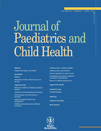Parental perceptions of barriers to children's participation in organised sport in Australia
Abstract
Aim: To examine parents' perceptions on how cost, time, travel and the variety of organised sporting activities influence their decisions to allow their child to participate in organised sport; and recent expenditure on sport-related items for their child.
Methods: Computerised assisted telephone interviews survey of 402 parents of children aged 5–17 years old living in New South Wales, Australia.
Results: Overall, 63% of children participated in organised sporting activities. Multivariate analysis shows that for parents of 5–12-year old children, the decision to allow their child to participate in organised sports was strongly influenced by time (P < 0.00). The financial costs associated with a child's participation in organised sports influenced families with lower incomes (p = 0.01) and with girls (p=0.04), while for rural families the option of a wider variety of local sporting activities influenced decisions about their child's participation in organised sport (p=0.05). Footwear/uniforms were the main sporting related expense. Sydney parents were more likely to report sport related expenditures for their child (P < 0.01).
Conclusions: Sporting costs, variety and time commitments influenced parents' decisions about their child's participation in organised sport. These factors indicate the need for initiatives to promote access to organised sports through reducing costs and increasing variety, particularly for families with lower incomes and are living in rural and regional areas.




